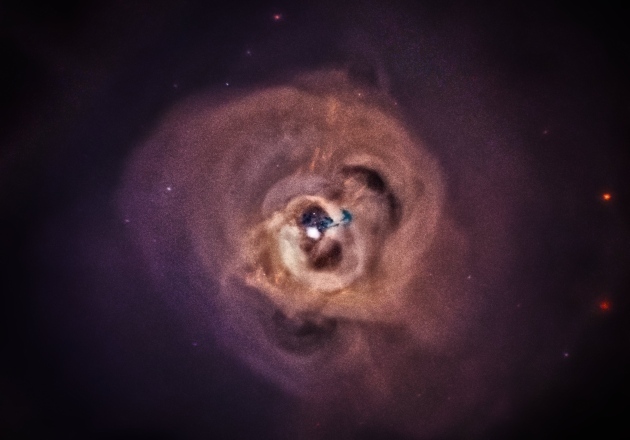
Dark matter remains one of the most mysterious elements of the universe, because it’s completely invisible to us. It neither emits nor absorbs light, so we can’t observe it directly — not even if we use our most powerful telescope. A team of researchers believe that they’ve come across important data that could change that, though: data that could lead to equipment being built especially to observe dark matter. While studying the X-ray data collected by the European Space Agency’s XMM-Newton spacecraft, the team came across a spike they couldn’t identify. This signal, which came from the Andromeda galaxy and the Perseus galaxy cluster, matched no other signal scientists have observed before.
“The signal’s distribution within the galaxy corresponds exactly to what we were expecting with dark matter — that is, concentrated and intense in the center of objects and weaker and diffuse on the edges,” said one of the researchers, Oleg Ruchayskiy of the École Polytechnique Fédérale de Lausanne (EPFL) in Switzerland. Even if we can’t see it (researchers have estimated how quickly it can move, though) scientists know dark matter exists due to its gravitational pull on other celestial objects. In fact, they believe it comprises over 80 percent of the universe.
If this strange X-ray spike really does correspond to dark matter, then we’ll now know where to look and what to look for to observe it. The team’s lead researcher, Alexey Boyarsky from EPFL and Leiden University in the Netherlands, believes its confirmation could lead to the “construction of new telescopes specially designed for studying the signals from dark matter particles.” His team wasn’t the only one to notice strange spikes in the X-ray data from ESA’s XMM-Newton spacecraft, though. A separate group of Harvard researchers came across similar signals while focusing on results from the center of the Perseus galaxy cluster (this team focused on data from the outside).
That said, both groups think it’s still too early to tell whether they’ve really hit jackpot (and some are already confident that they haven’t). The European team is still working to ensure that the signal didn’t come from another source and will publish the results in a paper next week. For now, scientific types who love graphs, data and mathematical equations can read the team’s study in its pre-published state.
[Image credit: X-ray: NASA/CXC/SAO/E.Bulbul, et al.]
Filed under: Science
Comments
Via: Space
Source: Arxiv (PDF)
